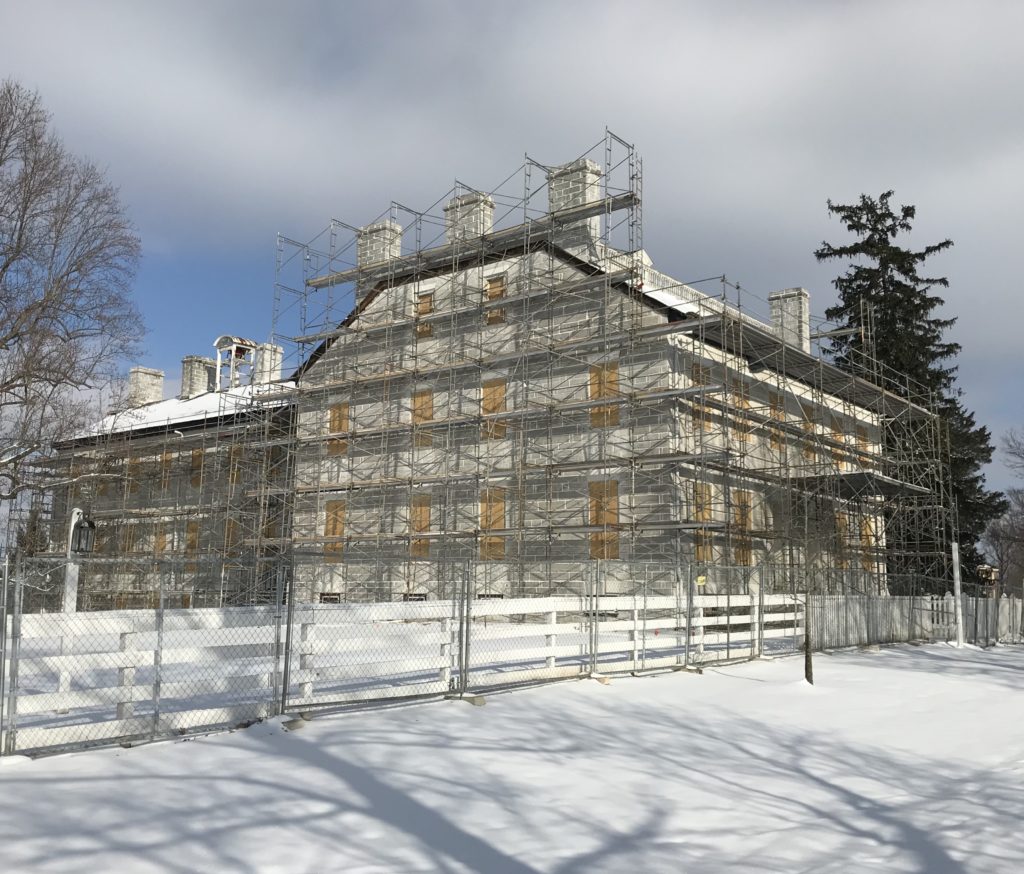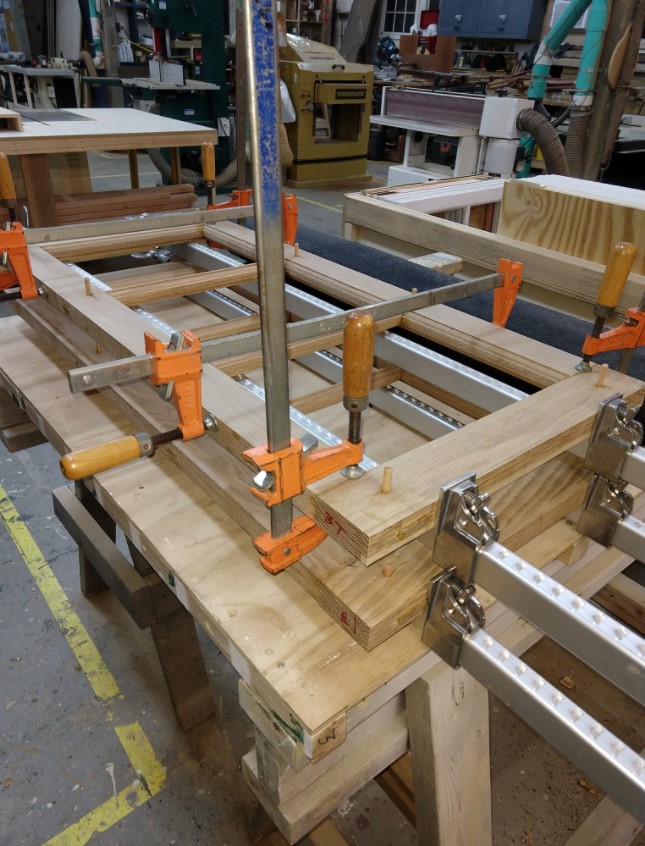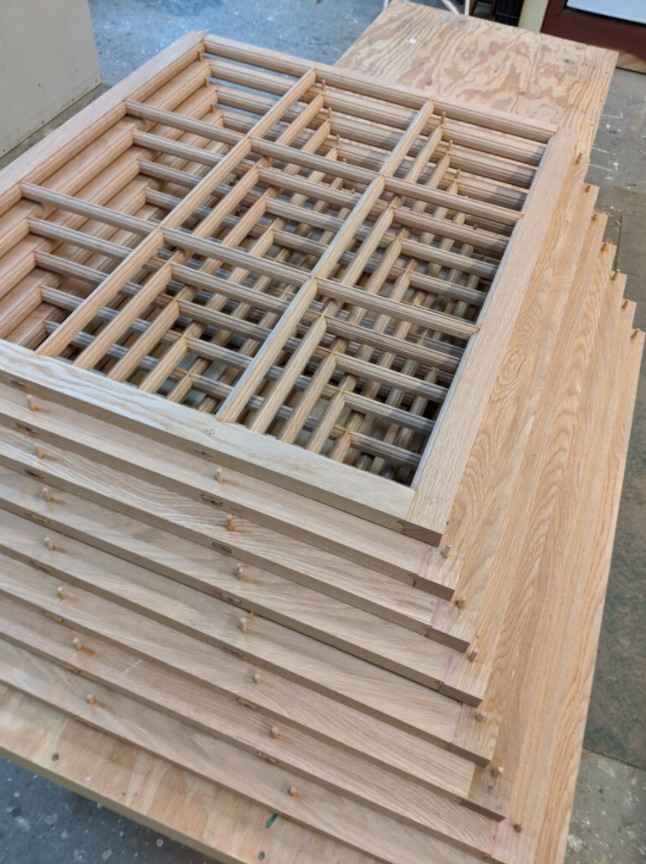Shelby Jones, Director of Communications
May is recognized nationally as Preservation Month, and has been celebrated in some form since 1973 with the National Trust for Historic Preservation leading the charge. This special month allows us to promote historic places along with heritage tourism. It also lets us shine the spotlight on the people who perform the hands-on work of repairing and caring for historic sites like Shaker Village.
Terry Cowart is Shaker Village’s Carpenter, and an expert in historic restoration. His dedication and love for honoring the Shaker legacy is apparent in every project he works on. In recognition of Preservation Month, we asked Cowart a few questions about his work and the importance of preservation.
Tell us about your background, have you always been a woodworker? Did you always want to do this as a career
I’ve been involved with woodworking all of my life, and professionally since 1981. I am more of what’s referred to as an architectural woodworker in lieu of a carpenter. I’ve met many carpenters that I couldn’t hold a candle to. My partner here in the woodshop, Robert Brown, is one such carpenter who recently returned to Shaker Village.
My background is more centered around custom cabinetry, architectural millwork and moldings. My father was a cabinet maker and his father before him. It was always a given that this is the field I would pursue since when I wasn’t at school as a child you could find me at my father’s woodshop. I do truly love it.
When you’re preparing to work on a project involving a historic building how do you prepare? Is there research involved? What departments or teams at Shaker Village do you collaborate with?
Generally, we access as many historical and architectural plans and details that we have on file such as the Historic American Building Survey plans. We review any particular area or building to assess the profiles, species and method of joinery, and any damage or decay that may have affected the site. Usually, we try to use existing or reclaimed original material that we store here at the Village. This involves species identification and sometimes requires outsourcing other reclaimed materials.
Our maintenance team, lead by Maintenance Foreman Mike Brown, and paint department that includes Mike Worthington and Bobby Dixon are critical to most projects. Many of our restorations involve plumbing, electrical, HVAC and the all-important old school quality paint finishes Mike and Bobby provide. We also collaborate with the programming team in all phases of design, production, finish and installation. It really is a group effort here at Shaker Village.

What are some of the challenges of working on historic spaces?
One important aspect I have learned in historical preservation work is identifying what is original construction, so that we can duplicate it to the best of our ability. The Shakers left a challenging and exacting act to follow. I am constantly humbled at the excellence and quality of even the most unseen areas of joinery. I count it as an honor to come behind to repair or duplicate their work.
What surprises or inspires you about the craftsmanship of the Shakers?
I am constantly inspired and awed at examples of Shaker woodworking. Their pursuit of excellence and purity is evident at every turn. What they were able to achieve is a direct reflection of these pursuits through their faith.
Are there key differences between the tools that the Shakers used to build structures versus the modern tools you have at your disposal? How much faster do you think you can complete a project compared to the time it took the Shakers to do the same thing?
We use many of the same tools today, however; a lot of today’s tools are battery, electric or compressed air driven, but their functions are much the same. I had a recent discussion with my colleague, Robert Brown, about how the Shakers achieved joinery with the tools they had in the same or even less time it requires us to achieve the same results.

What’s your favorite historic project that you’ve worked on?
The preservation and rehabilitation of the Centre Family Dwelling and Meeting House were my indoctrination to the Shaker methods of construction. I was hooked from the beginning and am proud of my efforts there.
A close second, is the window sash, component repair and replacement at the East Family Dwelling. We did indeed use modern tooling to replicate the window sashes in this building. They are true divided light six over six’s and nine over nine’s, with mortised and tenoned through rails and center stiles with wooden peg joinery.

Is there an upcoming project you’re looking forward to working on next?
In addition to other roles, I do a good bit of design and production on exhibit platforms and display cases for the newly rehabbed areas of different buildings. We are currently planning and staging this type of project for the East Family Brethren’s Shop and the East Family Sister’s Shop. I am able to employ what design or engineering skills I can muster to revise and alter the architectural plans we have on Auto CAD. I have previous experience in the digital design world, so this is a most handy skill to employ here. I enjoy handling large scale projects like this and I’m looking forward to it.
If there’s one thing you’d want someone to know about working on historic projects what would it be?
I have found that if you just give yourself over to the project, pursue excellence and purity at every turn, and do everything to the best of your ability, this place rewards you with the most job satisfaction I have known. It’s priceless really.
To learn more about historic preservation projects at Shaker Village visit our website. Additionally, you can learn how to support these projects to continue the legacy of the Pleasant Hill Shakers.